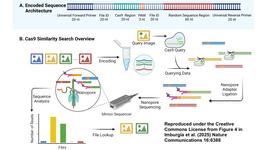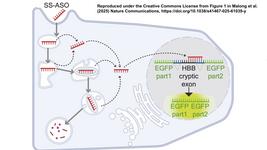New virus-like particles increase prime editing efficiency up to 170-fold
The all-in-one virus-like particles were developed through extensive engineering of each major component. They can contain all the needed components - prime editor proteins, prime editing guide RNAs, and nicking single guide RNAs. eVLP architectures that facilitate cargo release and cargo localisation were also optimised.
The newly engineered v3 and v3b PE-eVLPs function as transient ribonucleoprotein complexes and exhibit a staggering 65- to 170-fold increase in editing efficiency in human cells compared to previous base editor constructs.
In two genetic blindness mouse models, a single injection of v3 PE-eVLPs resulted in significant prime editing, protein expression restoration, and partial visual function recovery. The optimised PE-eVLPs offer enhanced safety by minimising off-target editing and eliminating the risk of oncogenic transgene integration during the in vivo delivery of prime editor ribonucleoproteins.
The research was published on Monday in Nature Biotechnology by David Liu and colleagues at the Broad Institute of MIT and Harvard. You can read the paper here.
To get more of the CRISPR Medicine News delivered to your inbox, sign up to the free weekly CMN Newsletter here.
Tags
CLINICAL TRIALS
Sponsors:
Suzhou Maximum Bio-tech Co., Ltd.
Sponsors:
Zhejiang University







